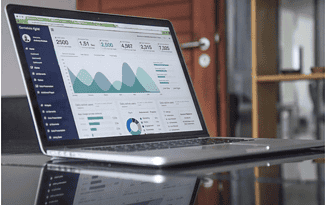
So much has been said about email marketing that one might argue if there is anything left to discuss. Everyone knows that email remains the single most popular service in terms of instant communication, and everyone can conclude the potentials the audience holds in terms of increasing the number of customers.
Curiously enough, an astonishingly high percentage of businesses don’t seem to fully comprehend the value of email in marketing. Albeit mostly all of them send newsletters, the potential hidden behind sending other types of messages remains untapped.
Is There More to Email Marketing Than Newsletters?
Newsletters, if done the right way (see below), are arguably one of the best ways to keep customers informed and interested in the offer. However, not being overwhelming is the wisdom of a successful newsletter strategy.
Statistics shows that newsletters should be sent quarterly, monthly or bi-monthly. So, how do you keep the audience continually animated while not spamming them?
For one thing, go personal. Personalization is the single most important trick when it comes to keeping customers happy. Address people by their name and send them only the messages they want to receive.
Although there are no general rules when it comes to people’s preferences, successful email marketing campaigns should stick to welcome and thank-you messages (regularly!) and order status emails (which include, on average, the following: receipts, shipment confirmations, shipment tracking information and delivery confirmations).

Who to Send Emails to?
Perhaps the most important question of all is: how to know (and where to find) a target audience? The answer is to be obtained via segmentation tools.
Demographics
Commonly, the first insight marketers turn to (and for a good reason!) is demographics.
There are a number of insights demographics provide; as to which ones are most useful depends on a business’ industry.
For example, age, gender, income level and company status speak volumes about people’s interests. The best way to collect relevant information is via sign-up (and other) website forms and surveys. Keep in mind, however, that asking for too many personal insights will result in a counter-effect.
Geo-Targeting
Another widely used demographics’ insight concerns geographic areas. Successful businesses use geo-targeting to promote optimal offers to each visitor; email marketing campaigns should rely on the same insight.
After all, sending a discount coupon for Australian wines to a customer in Finland just might not do the trick.
In addition to offers, geographic area insights may be used in a variety of other ways. One notable exception is for sending messages at the right time.
Time zones do matter! Then there is the advertising of regional promotions and live event invitations.
Options are close to limitless, so brainstorm your campaign to achieve the optimum results based on geo-targeting.
Past Purchases and Amounts Spent
People’s purchase habits are another good way to personalize the offer. The first obvious strategy would be to offer similar products or those that would complement the initial purchase.
The next step would be to use the insights on the amounts a customer generally spends per purchase to target the campaign. Send personalized offers falling in that purchase range to keep customers engaged.
These two can be polished further. I.e., seasonal offers, vouchers and coupons may be useful for people spending less, while VIP offers may appeal to high spenders.
Website Behavior
People’s browsing history is gold, and all social media outlets know that. Good marketers do wonders sending targeted emails by analyzing the behavior of the website visitors.
Some strategies rely on the most visited pages, others on the most clicked items, time spent on a page and so on. Options are limitless. I.e., you may wish to draw customers’ attention to a page related to the one that they regularly visit.
Sales Funnel Position
Sales funnel position is one of the fastest ways to better target your email campaigns and thus increase your ROI. People at the top will be interested in different messages than people at the bottom of the sales funnel.
I.e., new subscribers will likely welcome generalized messages informing them about the offer and best deals, while people with a history of purchases will be interested in a more personalized offer.
One factor of extreme importance here is cart abandonment; it unmistakably identifies if someone is at the bottom of the funnel.
Regular Customers
There is a good reason why frequent buyers have decided to become regular customers. Normally, they are attracted to the offer for a number of reasons, such as price, shipment, special offers and so on.
A business will wish to keep these people engaged; the best way to do that is by offering them special plans, promotions and features.
Finally, there are other insights that will greatly help the success of a campaign. Email engagement, the time since last purchase and similar information are certain to help with targeting.
As is always the case, there is no magic formula to a successful email campaign. It is the combination of multiple factors that renders the best results. Experiment with segmentation to find the best recipe.
Related Topics
The post Understanding the Value of Email in Marketing appeared first on Nigeria Technology Guide.
* This article was originally published here
